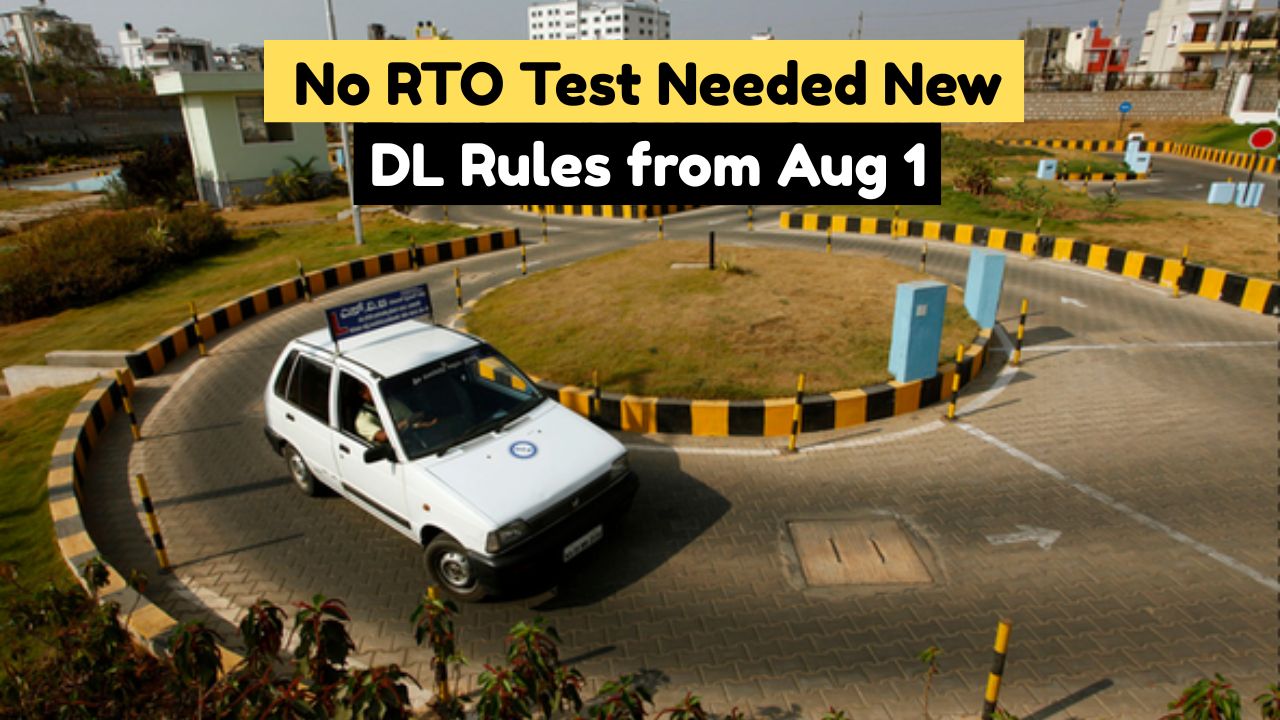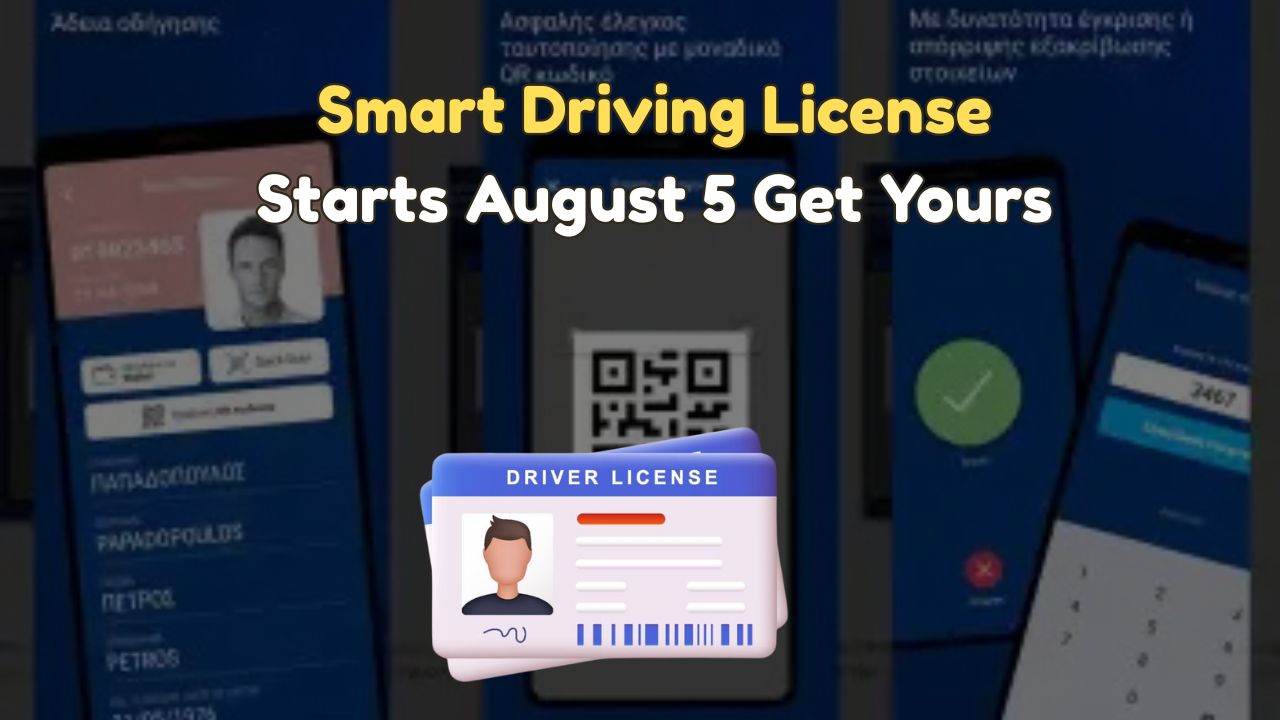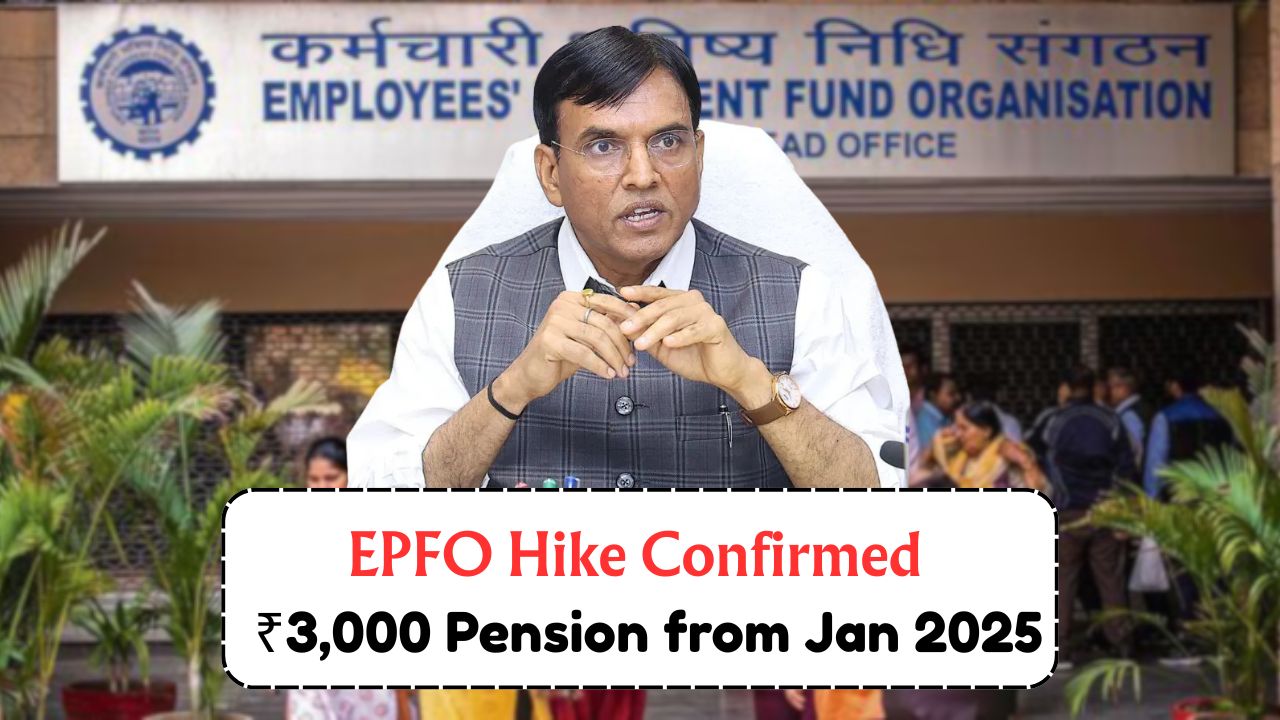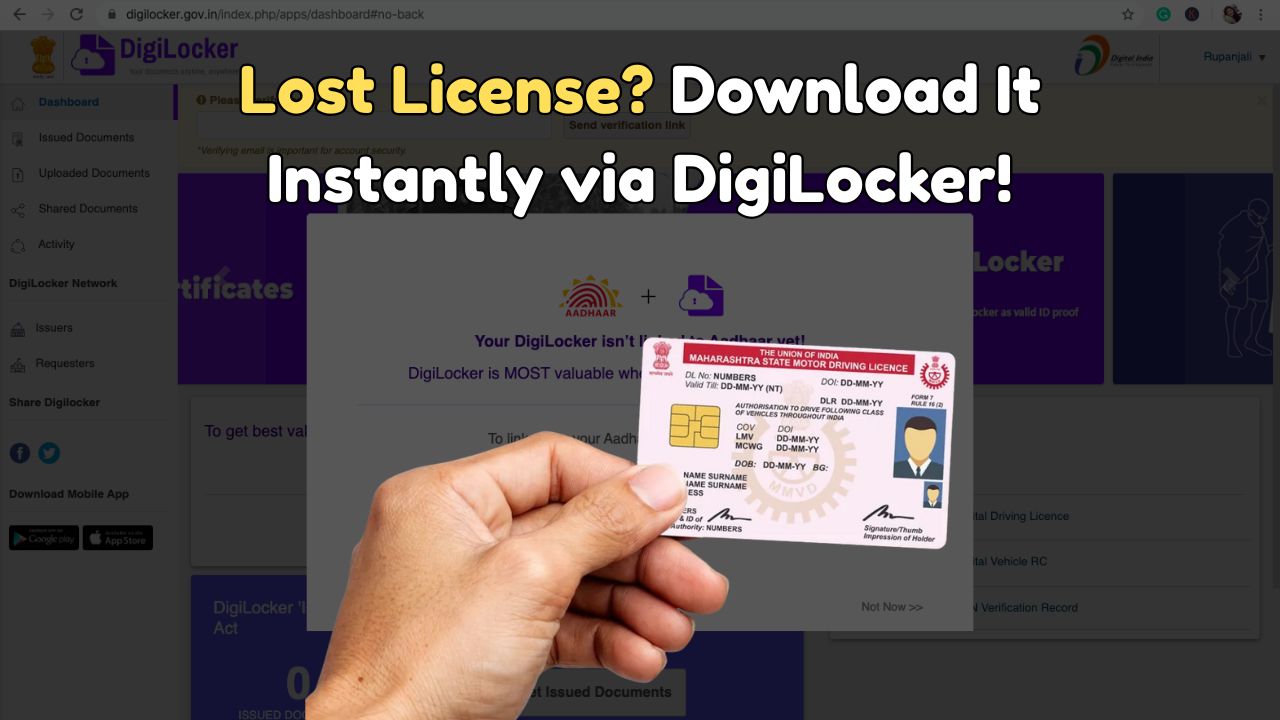Driving License Rules – Starting August 1, 2025, a major change in India’s driving license rules will take effect. The Ministry of Road Transport and Highways has introduced a new system that removes the mandatory driving test at the Regional Transport Office (RTO) for obtaining a driving license. This change is aimed at making the process smoother, reducing corruption, and eliminating long queues at RTOs across the country. Under the new rules, applicants can now get their driving licenses from authorized driving training centers without appearing for a test at the RTO. The move is expected to benefit thousands of new drivers, especially in rural and semi-urban areas, where accessing an RTO has often been difficult.
What Is Changing from August 1, 2025?
The Ministry has officially announced a shift from the traditional RTO-based testing system to an institutional model led by government-recognized training centers.
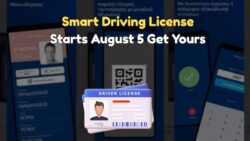 Now Get a Smart Driving License with QR Code and Chip – Rollout Begins Nationwide from August 5
Now Get a Smart Driving License with QR Code and Chip – Rollout Begins Nationwide from August 5
- No need for RTO driving test if trained at authorized driving school
- Certificates from recognized centers will be sufficient
- New rules apply across all states and union territories
- Focus is on improving road safety and driving discipline
- System aims to remove middlemen and reduce corruption
Key Benefits of the New Driving License Rules
| Benefit | Description |
|---|---|
| No RTO Driving Test | Eliminates the requirement for taking a test at the RTO office |
| Authorized Training | Training must be completed at certified private or government centers |
| Digital Certification | Certificates will be digitally issued and verified online |
| Less Paperwork | Most of the process will be digital, reducing documentation hassles |
| Faster Process | Time taken to obtain a license is expected to decrease significantly |
| Uniform Standards | Ensures consistent training and assessment standards nationwide |
| Reduced Bribes | Minimizes scope for corruption and under-the-table dealings |
| Better Driver Education | Promotes more rigorous and structured training |
What Are These Authorized Driving Training Centers?
The new framework puts the responsibility of testing into the hands of pre-approved driving training centers that will issue certification after proper evaluation.
- Must be approved by the Ministry of Road Transport & Highways (MoRTH)
- Should follow a fixed syllabus for LMVs (Light Motor Vehicles) and HMV (Heavy Motor Vehicles)
- Minimum 29-day training for LMVs and 38-day training for HMVs
- Must have a driving test track within the premises
- Certification will be valid for applying directly for a license
Basic Criteria for Becoming a Recognized Training Center
| Criteria | Requirements |
|---|---|
| Infrastructure | Driving track, classrooms, simulators |
| Trainers | Certified instructors with driving and teaching experience |
| Government Affiliation | Must be affiliated with MoRTH or State Transport Department |
| Syllabus Compliance | Must follow government-prescribed curriculum |
| Record Keeping | Digital attendance and performance logs |
| Evaluation System | Objective and video-recorded practical tests |
| Fee Transparency | Fee structure must be approved and displayed publicly |
| Periodic Audits | Centers will be subject to regular government inspections |
Eligibility Criteria for License Without RTO Test
Even though the RTO test is waived, the eligibility to get a driving license remains strict and standardized.
- Must be 18 years or older for Light Motor Vehicles
- Completion of training from an approved driving center
- Submission of digital certificate from the training center
- Medical certificate for those above 40 years of age
- Learner’s License is still required before final certification
Process to Apply for Driving License Under New Rules
| Step No. | Process Description |
|---|---|
| 1 | Enroll in a certified driving training center |
| 2 | Complete theoretical and practical training |
| 3 | Undergo evaluation and pass internal driving test |
| 4 | Receive digital training completion certificate |
| 5 | Apply for a driving license online using this certificate |
| 6 | Skip RTO driving test |
| 7 | License issued via mail or local RTO collection |
Which Vehicle Categories Are Covered?
The new rules cover both personal and commercial categories, with different training duration and requirements based on vehicle type.
- LMV (Light Motor Vehicles) – Cars, Jeeps, Small Vans
- MCWG (Motorcycles with Gear) – Scooters, Bikes above 50cc
- MCWOG (Motorcycles without Gear) – Electric scooters, Mopeds
- HMV (Heavy Motor Vehicles) – Trucks, Buses, Commercial transport
Category-wise Training Requirements
| Vehicle Category | Minimum Training Days | Certification Needed | Test at RTO? |
|---|---|---|---|
| LMV | 29 days | Yes | No |
| MCWG | 15 days | Yes | No |
| MCWOG | 7–10 days | Yes | No |
| HMV | 38 days | Yes | No |
| Commercial License | 45+ days | Yes | No |
Penalties and Conditions for Misuse or Fake Certificates
The government has also put strong measures in place to ensure misuse of the new system is prevented.
- Fake certificates will result in a 6-month ban from reapplying
- Training centers found violating rules may be permanently blacklisted
- Surprise audits and video monitoring of internal tests
- Digital record-keeping will be mandatory for transparency
- Online portal will verify the certificate authenticity instantly
Possible Scenarios of Rejection
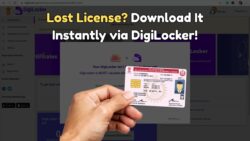 Lost Your Driving License? Download Digital Copy Instantly – DigiLocker Now Fully Integrated
Lost Your Driving License? Download Digital Copy Instantly – DigiLocker Now Fully Integrated
| Reason for Rejection | Consequence |
|---|---|
| Certificate not from MoRTH center | Application automatically rejected |
| Tampered certificate | Legal action and blacklisting |
| Incomplete training | Must repeat course |
| Failing internal test | Re-training required |
| Use of unregistered center | Not eligible for license under new rules |
How Will This Impact Existing Applicants and RTOs?
This transformation will not only help new applicants but also streamline the role of RTOs by removing the testing burden and focusing more on regulation and enforcement.
- Current learner’s license holders can upgrade through training centers
- RTOs will only validate documents and issue licenses, not conduct driving tests
- Long wait times at RTOs will be reduced dramatically
- Reduces dependency on brokers or agents
- Encourages a transparent, uniform national licensing model
Impact on Driving Schools & Brokers
| Stakeholder | Likely Impact |
|---|---|
| Traditional RTOs | Reduced workload and shorter queues |
| Brokers/Agents | Loss of business, especially for test-day help |
| Driving Schools | Must get official certification or risk closure |
| Applicants | More clarity and ease of process |
| Government | Better control, transparency, and safety |
The upcoming rule change from August 1, 2025, marks a historic reform in India’s road transport policy. By eliminating the RTO driving test and shifting the responsibility to certified training centers, the government is moving toward a more standardized, transparent, and efficient process. This change is expected to benefit lakhs of applicants every year while also improving road safety and reducing corruption. However, it is crucial for applicants to ensure they choose only government-recognized centers and complete their training sincerely.
FAQs
1. Will the new rules apply to two-wheeler licenses too?
Yes, motorcycles with and without gear are included under the new training and certification system.
2. Can I still take the driving test at the RTO if I want to?
Yes, if you prefer, you can still opt for a traditional RTO test. The new system is optional but encouraged.
3. How do I verify if a driving school is approved?
Visit the official MoRTH website or check the approved center list on your state transport department portal.
4. Is the new certificate valid nationwide?
Yes, once issued by an authorized center, the certificate is valid across all Indian states and union territories.
5. Will the license fees change under the new system?
The government has not changed the license fees, but training centers may have their own fee structure which must be transparently displayed.
